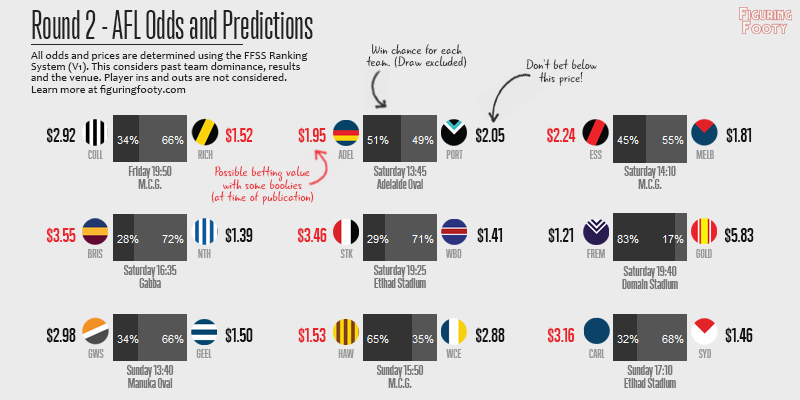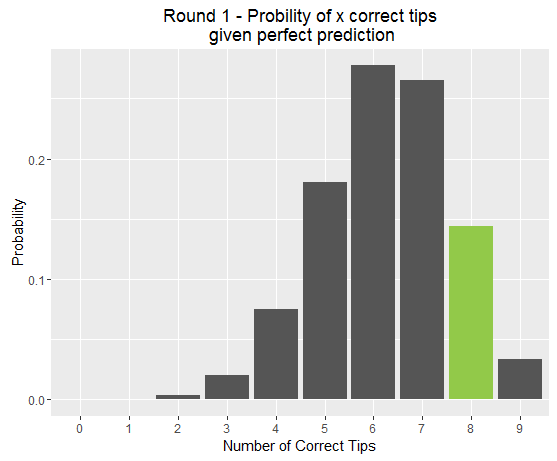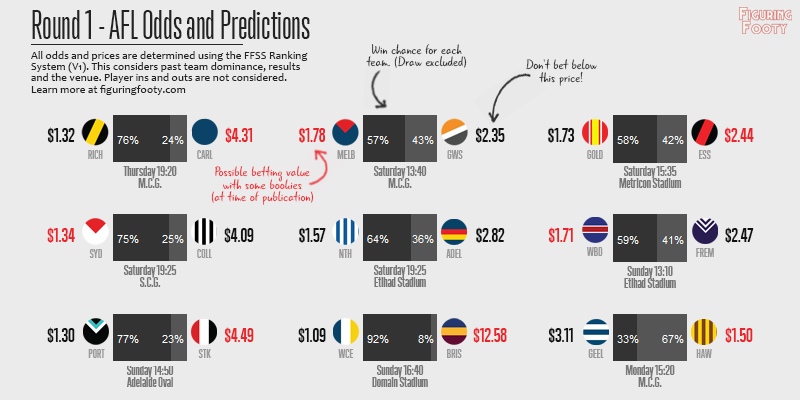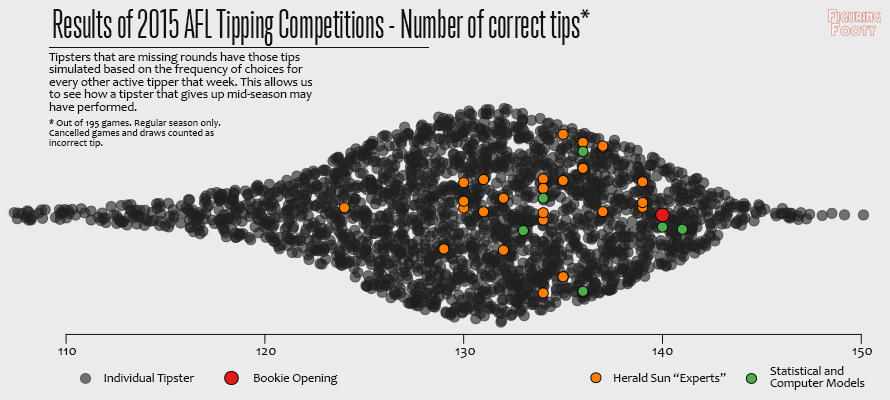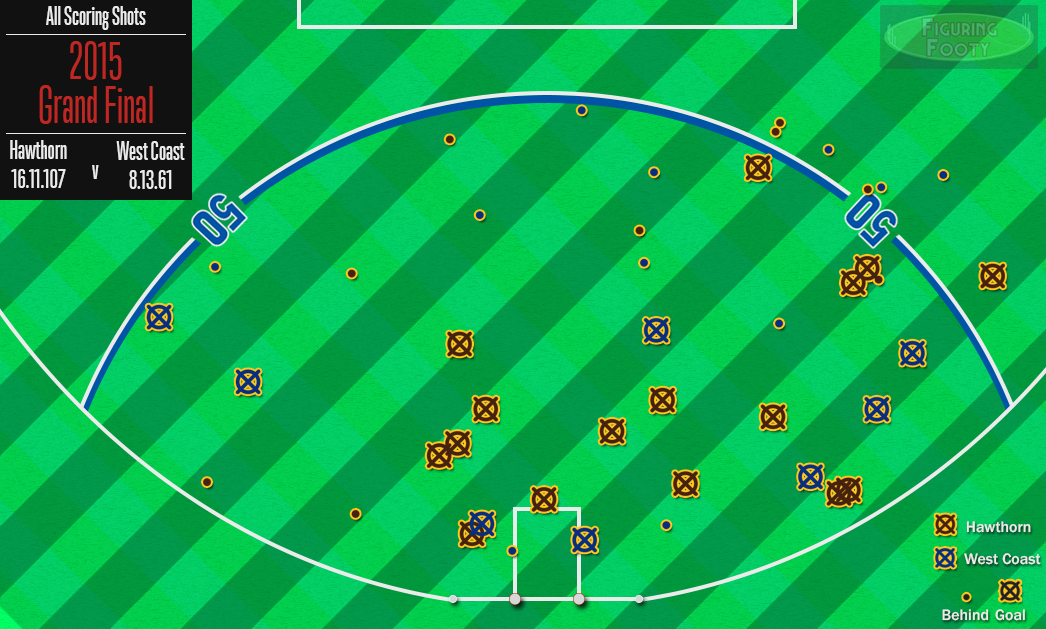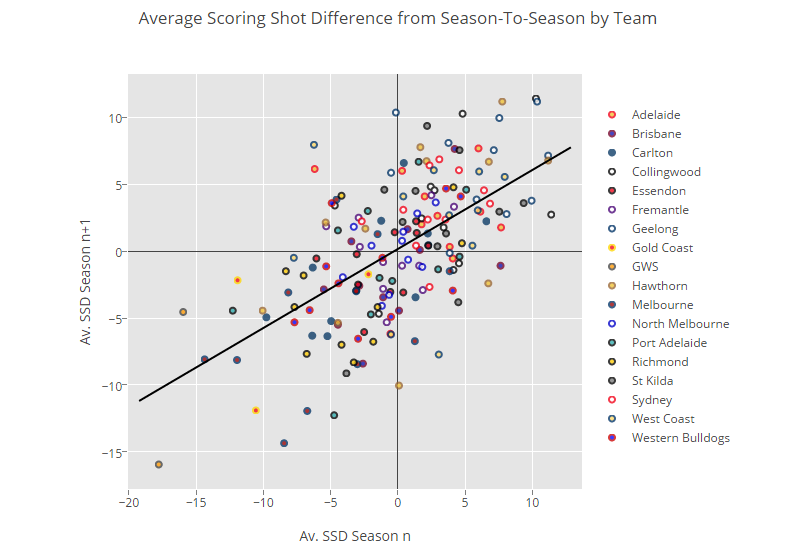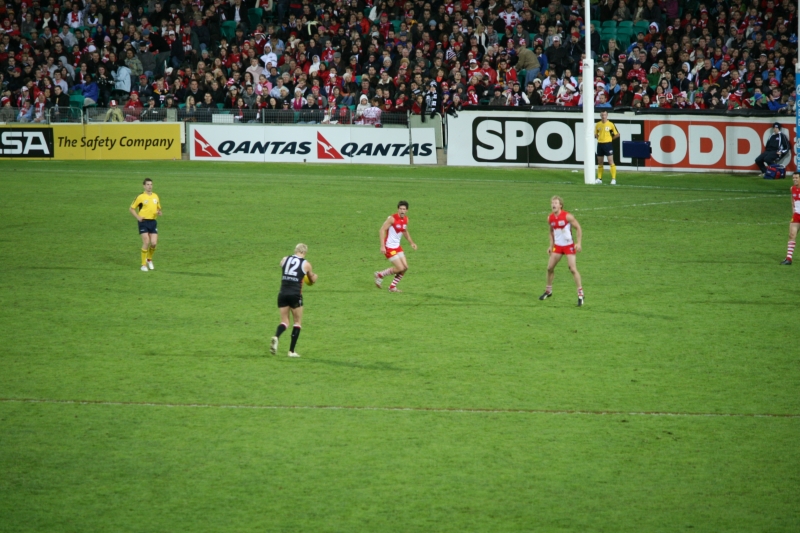Week 1 proved to be a very successful round of tipping for the FFSS (Figuring Footy Scoring Shots) predictor. 8 out of 9 games were tipped correctly, and if you followed through on my recommended bets you would have netted yourself a tidy little profit of +13.02 Units (which would be about $130 if you started with a total bankroll of $1000). However, I also wrote this week about grounding our expectations in reality, and why last week’s results may have been a bit lucky.
This week poses us a fresh new challenge. As has been discussed a fair bit on Twitter, last round saw every home team get up. With the way the AFL draw is organised in the early rounds, this means that every single one of Round 1’s winners, goes into Round 2 as the away team. This means that each of them will face a handicapping by FFSS’s Home Ground Advantage calculator. HGA takes into account distance travelled by each team, ground experience by each team and the AFL designated home team (for games that are played at shared stadiums). This week, HGA varies between ~7 ratings points for Essendon at the G against Melbourne and ~110 ratings points for Freo at home to the Suns.1

